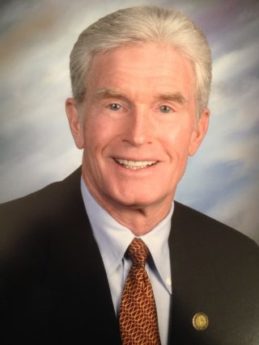HOME | ABOUT US | MEDIA KIT | CONTACT US | INQUIRE
HOME | ABOUT US | MEDIA KIT | CONTACT US | INQUIRE
How does transparency there affect markets?
 President Biden’s State of the Union earlier this month includ-ed the usual mix of calls for bipartisan cooperation and partisan finger-pointing. Specific policy recommendations getting the most attention called for quadrupling the 1 percent tax on corporate share buybacks and increasing environmental spending. Neither is likely to get much traction in a divided Congress and probably 90 percent of what was discussed by Biden will never occur.
President Biden’s State of the Union earlier this month includ-ed the usual mix of calls for bipartisan cooperation and partisan finger-pointing. Specific policy recommendations getting the most attention called for quadrupling the 1 percent tax on corporate share buybacks and increasing environmental spending. Neither is likely to get much traction in a divided Congress and probably 90 percent of what was discussed by Biden will never occur.
Jerome Powell, who chairs the Federal Reserve Board, seemed energized at the Washington Economic Club on the day of Biden’s address. The key takeaway from Powell’s appearance is that the strong employment report issued later that same week underscores the Fed’s message. That message, Powell says, is that there is still a lot more work to do. In comparison with previous versions of the Fed, one would say this Chair was unusually candid. While the Powell Fed is being candid, he also reveals a lot.
Powell says this new transparency was a necessary evolution for a modern central bank. The hope is that if traders know what the Fed thinks it will do and why it thinks it should do it, then the market can reposition as the economy shifts. Policy justification shifts may occur before the Fed has to communicate a new idea or what it plans to do. With that in mind, Powell’s communication is consistent with another quarter-point hike in March, plus plans for more potential increases after that. Of course, those plans will change if the economy unfolds in ways the Fed currently does not anticipate.
David Rubinstein’s breezy style put Powell at ease, prompting surprisingly candid responses. Some of the questions about the process were new ones. For example, did anyone know the Federal Open Markets Committee meetings start a week before the announcement date with a series of phone calls? The Chair has a long, in-depth conversation about the economy and policy with each of the 18 other committee participants before the formal discussion starts in Washington.
That was not common knowledge. The fact is that policy options prepped for the meeting are compiled by the chair, explaining how the options are mapped out. Powell also noted that if, during the formal meeting, it looks as though the committee is not comfortable with his options, he will call a break and work with a smaller team to redraft them. This is a more democratic approach than in the past, suggesting that we really should pay attention to what everyone on the FOMC has to say between meetings, not just the Chair.
Compared to the news conference, where most reporters ask variations of the same question about the divergence between Fed and market rate expectations, this recent interview was refreshingly wide-ranging.
Interestingly, the first question, about the employment report and the Fed’s plans for rates, elicited a more definitive answer than similar previous questions.
Does Powell see economic releases before they are published? Powell res-ponded that he gets a call—just me as Chair, no one else—the day before some reports confirm what Wall Street thought. The last Chair who answered this particular question was Alan Greenspan. Has nothing changed in 40 years? In terms of the last FOMC meeting, did Powell not know a huge employment report was going to be reported? Did that call come the day before the release, in this case, a day after the FOMC meeting wrapped up?
Rubenstein even asked Powell about his management style. When you want to talk to your fellow governors, do you walk down to their offices, or do you call them into yours? After all, when 19 individuals make decisions with so much economic influence, psychology is as important as economics in a forecast. The way a boss works day to day with his or her subordinates says a lot about how they build loyalty and work toward consensus.
Powell’s answer—essentially, “I like to get up and pop in on people”—explains a lot about the Fed, especially the energy and comfort FOMC participants have communicating with the public. Greenspan, in contrast, once said that he often did not speak to any fellow FOMC board members between meetings. Board members who served in the ’80s and early ’90s said they went to Washington excited about being part of something, only to find that no one talked to anyone else.
Once, it was a cold and lonely place, but, clearly, not anymore.